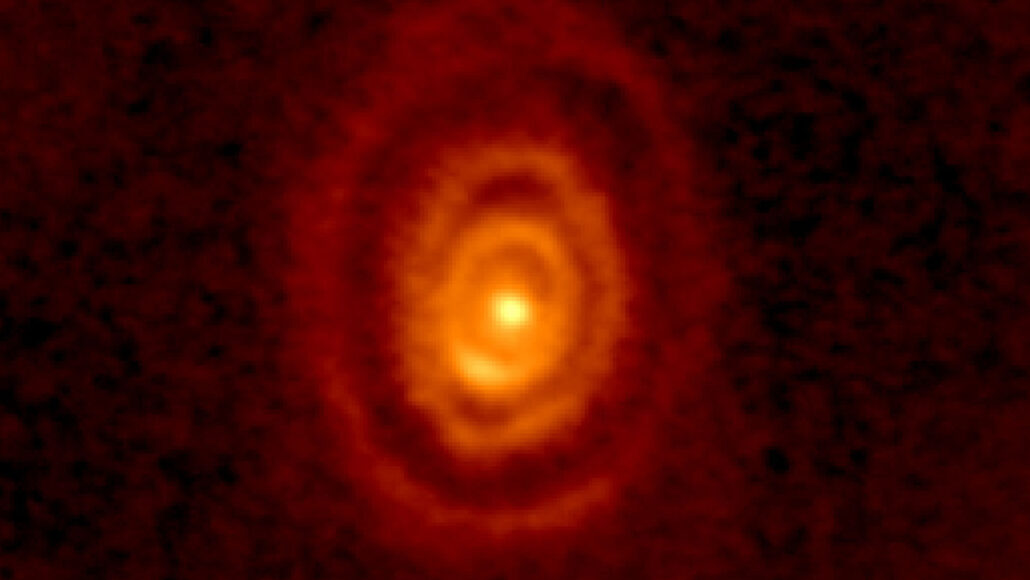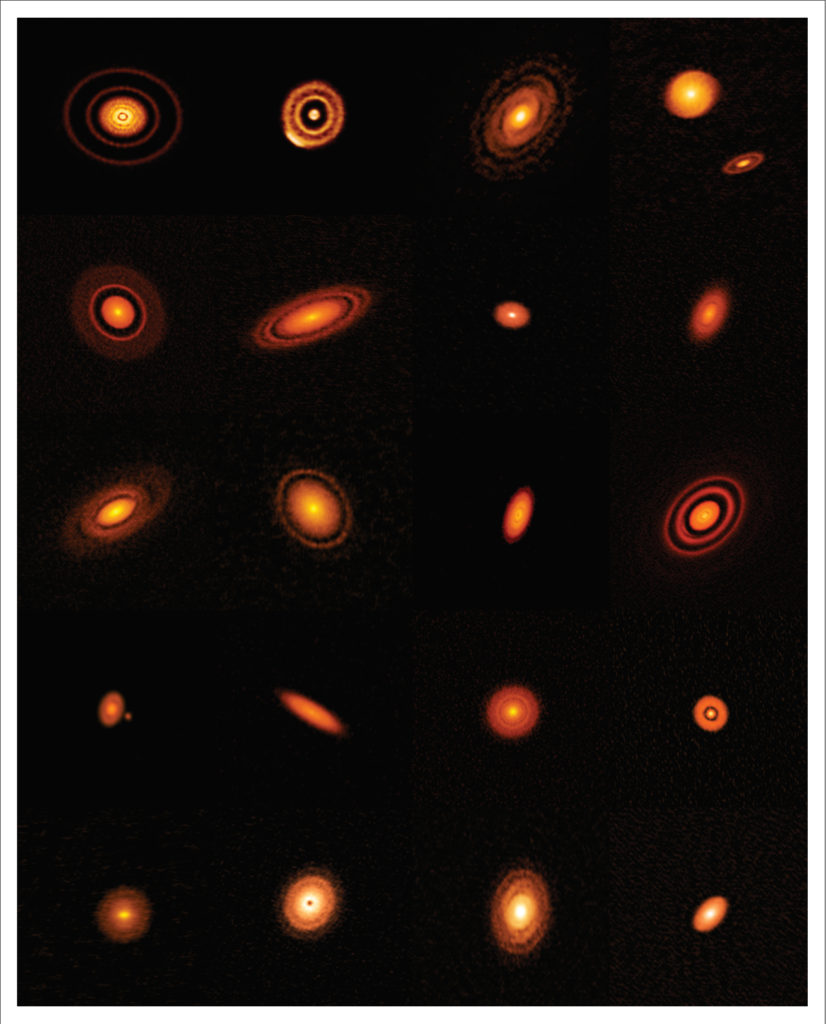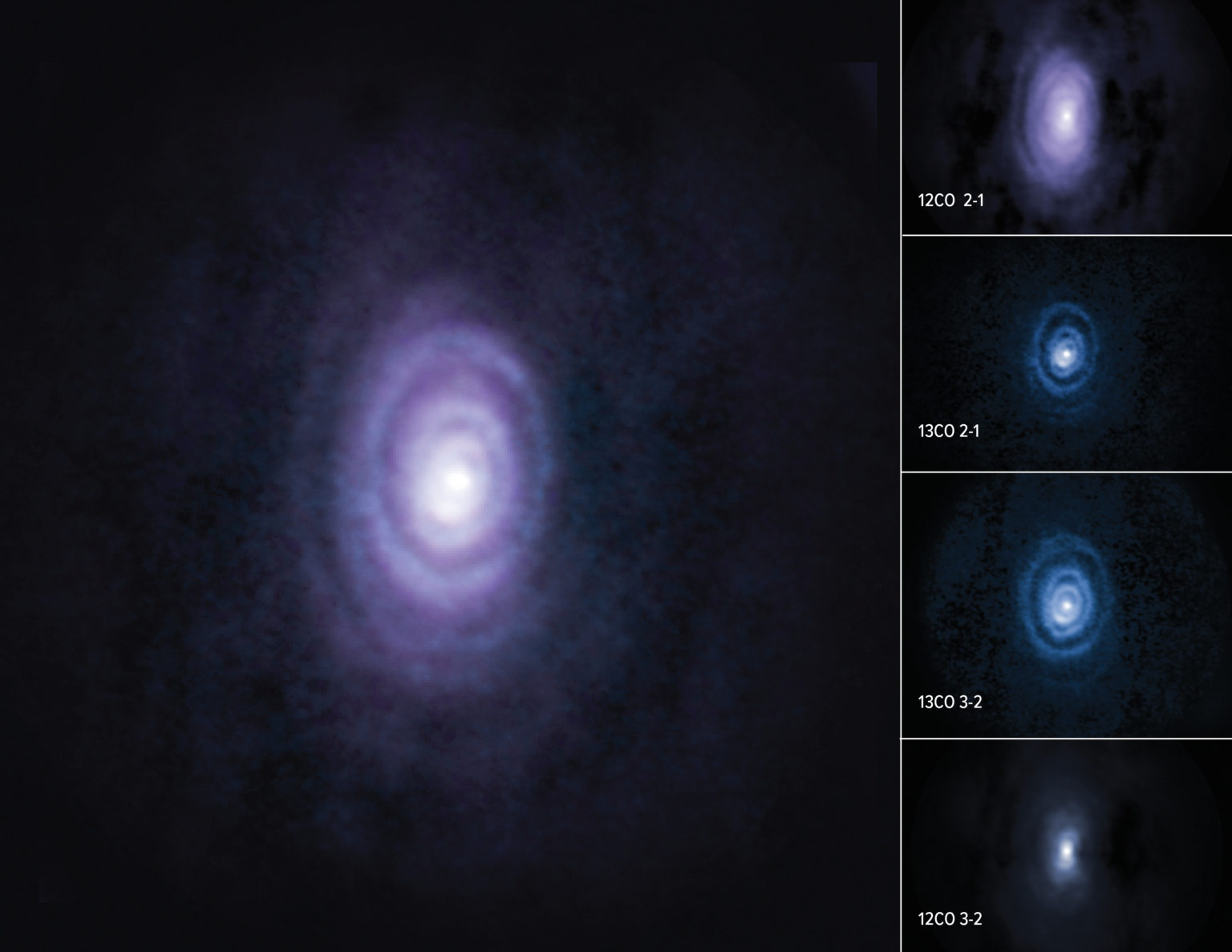Page 1 of 1
New Image Shows Huge Rings Encircling an Aging Red Star
Posted: Wed Mar 09, 2022 2:14 am
by Mercury
by Ken Croswell
The star is losing mass as it transforms into a white dwarf star.
Link:
Science News
Re: New Image Shows Huge Rings Encircling an Aging Red Star
Posted: Wed Mar 09, 2022 5:42 am
by Ann
Mercury wrote: ↑Wed Mar 09, 2022 2:14 am
by Ken Croswell
The star is losing mass as it transforms into a white dwarf star.
Link:
Science News
The rings around the aging red giant star are a dead "ringer" for the rings seen in many protoplanetay disks around young stars. A new study suggests that such rings in a protoplanetary disk may be the cause of the formation of planets in certain positions and of a certain mass, rather than being the visual clue that planet formation has already occurred.
Andre Izidoro et al. wrote:
Astronomical observations reveal that protoplanetary disks around young stars commonly have ring- and gap-like structures in their dust distributions. These features are associated with pressure bumps trapping dust particles at specific locations, which simulations show are ideal sites for planetesimal formation. Here we show that our Solar System may have formed from rings of planetesimals -- created by pressure bumps -- rather than a continuous disk. We model the gaseous disk phase assuming the existence of pressure bumps near the silicate sublimation line (at T∼1400~K), water snowline (at T∼170~K), and CO-snowline (at T∼30~K). Our simulations show that dust piles up at the bumps and forms up to three rings of planetesimals: a narrow ring near 1~au, a wide ring between ∼3-4~au and ∼10-20~au, and a distant ring between ∼20~au and ∼45~au. We use a series of simulations to follow the evolution of the innermost ring and show how it can explain the orbital structure of the inner Solar System and provides a framework to explain the origins of isotopic signatures of Earth, Mars and different classes of meteorites. The central ring contains enough mass to explain the rapid growth of the giant planets' cores. The outermost ring is consistent with dynamical models of Solar System evolution proposing that the early Solar System had a primordial planetesimal disk beyond the current orbit of Uranus.
But if planets form from rings of planetesimals in protoplanetary rings, then perhaps the rings around dying red giants could also create planets? And could such planets not keep orbiting their star after the star has transformed from a red giant into a white dwarf?
Pallab Ghosh of BBC wrote:
Researchers believe there may be a planet that could sustain life, in the vicinity of a dying sun.
If confirmed, this would be the first time that a potentially life-supporting planet has been found orbiting such a star, called a "white dwarf".
The planet was detected in the star's "habitable zone", where it's neither too cold nor too hot to sustain life.
Well, in view of the onslaught of ultraviolet light from the white dwarf, I doubt that the planet would be very habitable. But it is interesting to consider that it might just have formed from "the second wave of planet formation", the red giant stage of planet formation, of the star it is orbiting.
Ann
ALMA: Mysterious Death of Carbon Star Plays Out Like Six-Ring Circus
Posted: Mon Mar 28, 2022 4:37 pm
by bystander
Hey DUDE: Mysterious Death of Carbon Star Plays Out Like Six-Ring Circus
ALMA |
NRAO | 2022 Mar 28
Scientists studying V Hydrae (V Hya) have witnessed the star’s mysterious death throes in unprecedented detail. Using the Atacama Large Millimeter/submillimeter Array (ALMA) and data from the Hubble Space Telescope (HST), the team discovered six slowly-expanding rings and two hourglass-shaped structures caused by the high-speed ejection of matter out into space. The results of the study are published in The Astrophysical Journal.
V Hya is a carbon-rich asymptotic giant branch (AGB) star located approximately 1,300 light-years from Earth in the constellation Hydra. More than 90-percent of stars with a mass equal to or greater than the Sun evolve into AGB stars as the fuel required to power nuclear processes is stripped away. Among these millions of stars, V Hya has been of particular interest to scientists due to its so-far unique behaviors and features, including extreme-scale plasma eruptions that happen roughly every 8.5 years and the presence of a nearly invisible companion star that contributes to V Hya’s explosive behavior. ...
The six rings have expanded outward from V Hya over the course of roughly 2,100 years, adding matter to and driving the growth of a high-density flared and warped disk-like structure around the star. The team has dubbed this structure the DUDE, or Disk Undergoing Dynamical Expansion. ...
In addition to a full set of expanding rings and a warped disk, V Hya’s final act features two hourglass-shaped structures—and an additional jet-like structure—that are expanding at high speeds of more than half a million miles per hour (240 km/s). ...
The Rapidly Evolving AGB Star, V Hya: ALMA Finds
a Multi-Ring Circus with High-Velocity Outflows ~ R. Sahai,
et al (Feb 2022, ApJ)
Unseen companions of V Hya inferred from periodic ejections ~ Jesus M. Salas,
et al (Aug 2019, MNRAS)
High-speed Bullet Ejections during the AGB-to-Planetary Nebula
Transition: HST Observations of the Carbon Star, V Hydrae ~ R. Sahai,
et al (Aug 2016, ApJ)
High-Velocity Bipolar Outflow and Disklike Envelope in the Carbon Star V Hydrae ~ Naomi Hirano,
et al (Nov 2004, ApJL)
A collimated, high-speed outflow from the dying star V Hydrae ~ R. Sahai,
et al (Nov 2003, Nature)
V Hydrae: the missing link between spherical red giants and bipolar
planetary nebulae? Radio observations of the molecular envelope. ~ C. Kahane,
et al (Oct 1996, A&A)
Discovery of very high velocity outflow in V Hydra:
Wind from an accretion disk in a binary? ~ R. Sahai, P. G. Wannier (July 1988, A&A)



